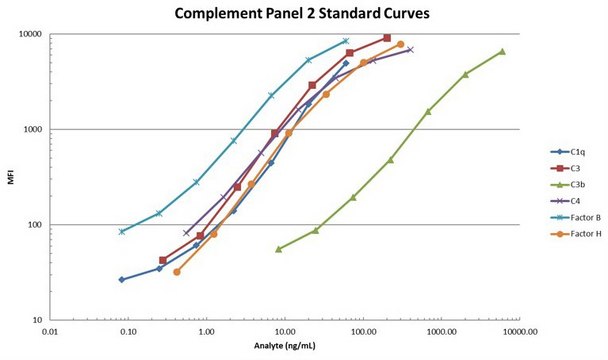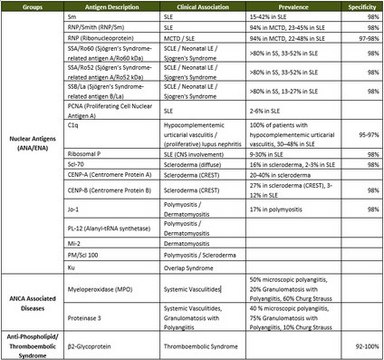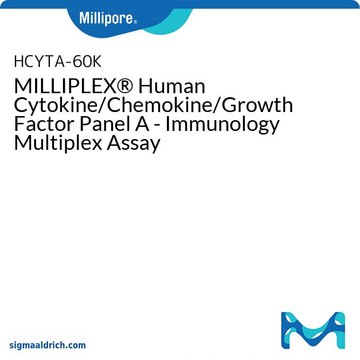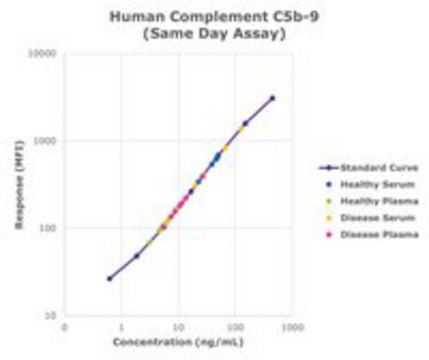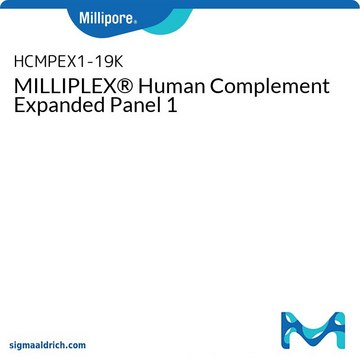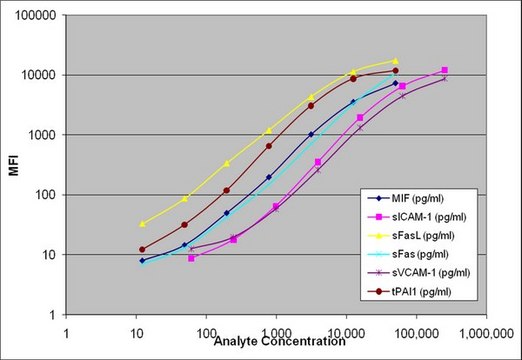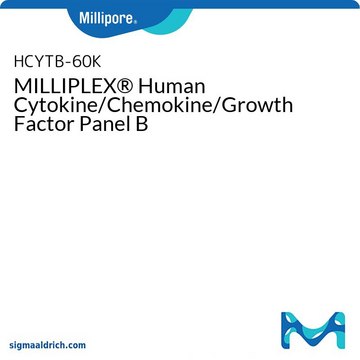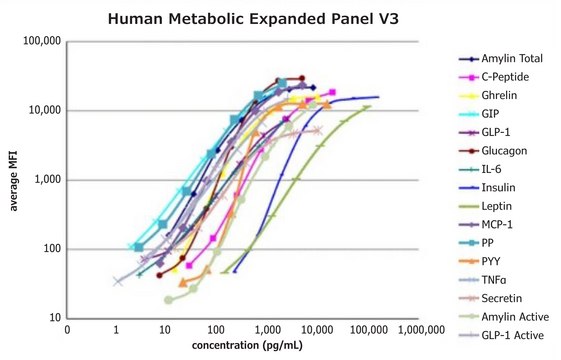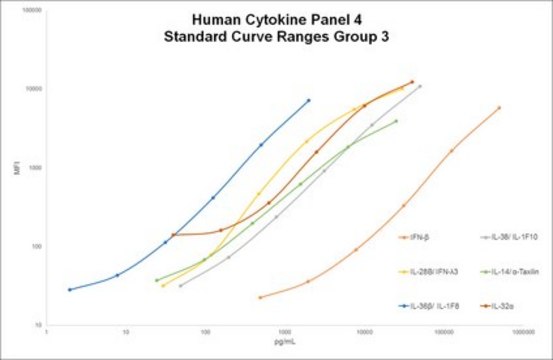HCMP1MAG-19K
MILLIPLEX® Human Complement Panel 1 - Immunology Multiplex Assay
The Human Complement Panel 1 Bead-Based Multiplex Assay kit, using the Luminex xMAP technology, enables the simultaneous analysis of complement proteins and factors in human serum, plasma and cell culture samples.
Synonym(s):
Human complement multiplex kit, Luminex® human complement immunoassay, Millipore human complement panel
About This Item
Recommended Products
Quality Level
species reactivity
human
manufacturer/tradename
Milliplex®
assay range
accuracy: 96%
(Mannose-Binding Lectin (MBL))
sensitivity: 0.0051 ng/mL
(Complement C5a)
sensitivity: 0.026 ng/mL
(Adipsin (Complement Factor D))
sensitivity: 0.040 ng/mL
(Mannose-Binding Lectin (MBL))
sensitivity: 0.22 ng/mL
(Complement Factor I)
sensitivity: 0.31 ng/mL
(Complement C2)
sensitivity: 0.36 ng/mL
(Complement C4b)
sensitivity: 1.040 ng/mL
(Complement C5)
standard curve range: 0.069-50 ng/mL
(Adipson/ Complement Factor D)
standard curve range: 0.07-50 ng/mL
(Complement C2)
standard curve range: 0.137-100 ng/mL
(Mannose-Binding Lectin (MBL))
standard curve range: 0.69-500 ng/mL
(Complement Factor I)
standard curve range: 1.37-1,000 ng/mL
(Complement C4b)
standard curve range: 2.74-2,000 ng/mL
(Complement C5)
standard curve range: 4.12-30,000 pg/mL
(Complement C5a)
technique(s)
multiplexing: suitable
detection method
fluorometric (Luminex xMAP)
shipped in
2-8°C
General description
MILLIPLEX® Complement Panel 1 Bead Panel is an 7-plex kit to be used for the simultaneous quantification of any or all of the following analytes in serum, plasma or culture supernatant samples: C2, C4B, C5, C5a, Adipsin/Complement Factor D, MBL and Complement Factor I.
The Luminex® xMAP® platform uses a magnetic bead immunoassay format for ideal speed and sensitivity to quantitate multiple analytes simultaneously, dramatically improving productivity while conserving valuable sample volume.
Panel Type: Immune Response
Specificity
Cross-reactivity between the antibodies and any of the other analytes in this panel is non-detectable or negligible.
Application
- Analytes: C2, C4b, C5, C5a, Adipsin/Factor D, Mannose-Binding Lectin (MBL), and Factor I
- Recommended Sample type: Serum, plasma, and tissue/cell culture supernatant
- Recommended Sample dilution: 1:200 diluted plasma or serum. Tissue culture supernatant may require a dilution with an appropriate control medium prior to assay
- Assay Run Time: Overnight or two-hour primary incubation
- Research Category: Inflammation & Immunology
- Research Subcategory: Inflammation
- Note: To avoid complement activation in samples, which will affect the results, samples should be thawed as rapidly as possible, put on ice and assayed immediately
Features and Benefits
Packaging
Storage and Stability
Legal Information
Disclaimer
Signal Word
Danger
Hazard Statements
Precautionary Statements
Hazard Classifications
Acute Tox. 4 Dermal - Acute Tox. 4 Inhalation - Acute Tox. 4 Oral - Aquatic Chronic 2 - Eye Dam. 1 - Skin Sens. 1 - STOT RE 2
Target Organs
Respiratory Tract
Storage Class Code
10 - Combustible liquids
Regulatory Information
Certificates of Analysis (COA)
Search for Certificates of Analysis (COA) by entering the products Lot/Batch Number. Lot and Batch Numbers can be found on a product’s label following the words ‘Lot’ or ‘Batch’.
Already Own This Product?
Find documentation for the products that you have recently purchased in the Document Library.
Our team of scientists has experience in all areas of research including Life Science, Material Science, Chemical Synthesis, Chromatography, Analytical and many others.
Contact Technical Service